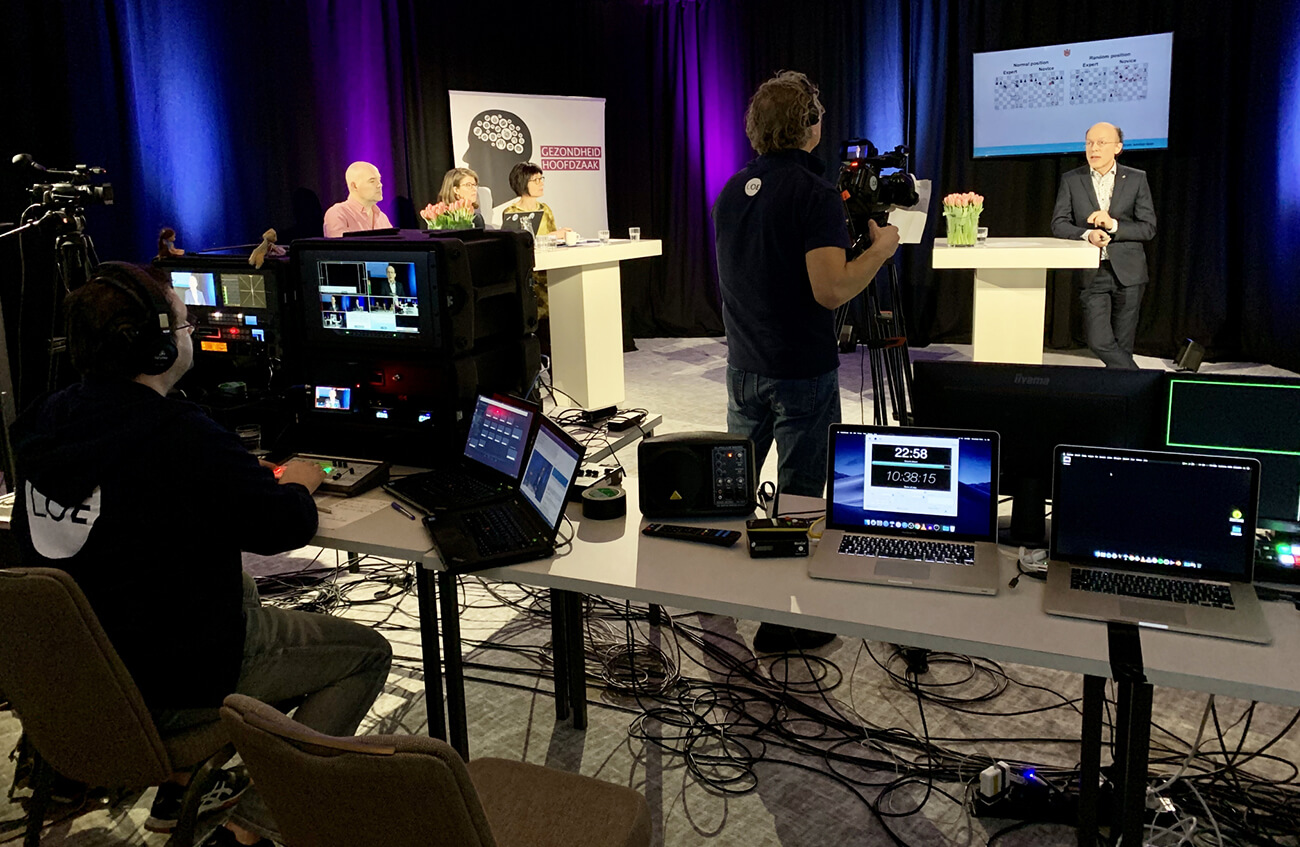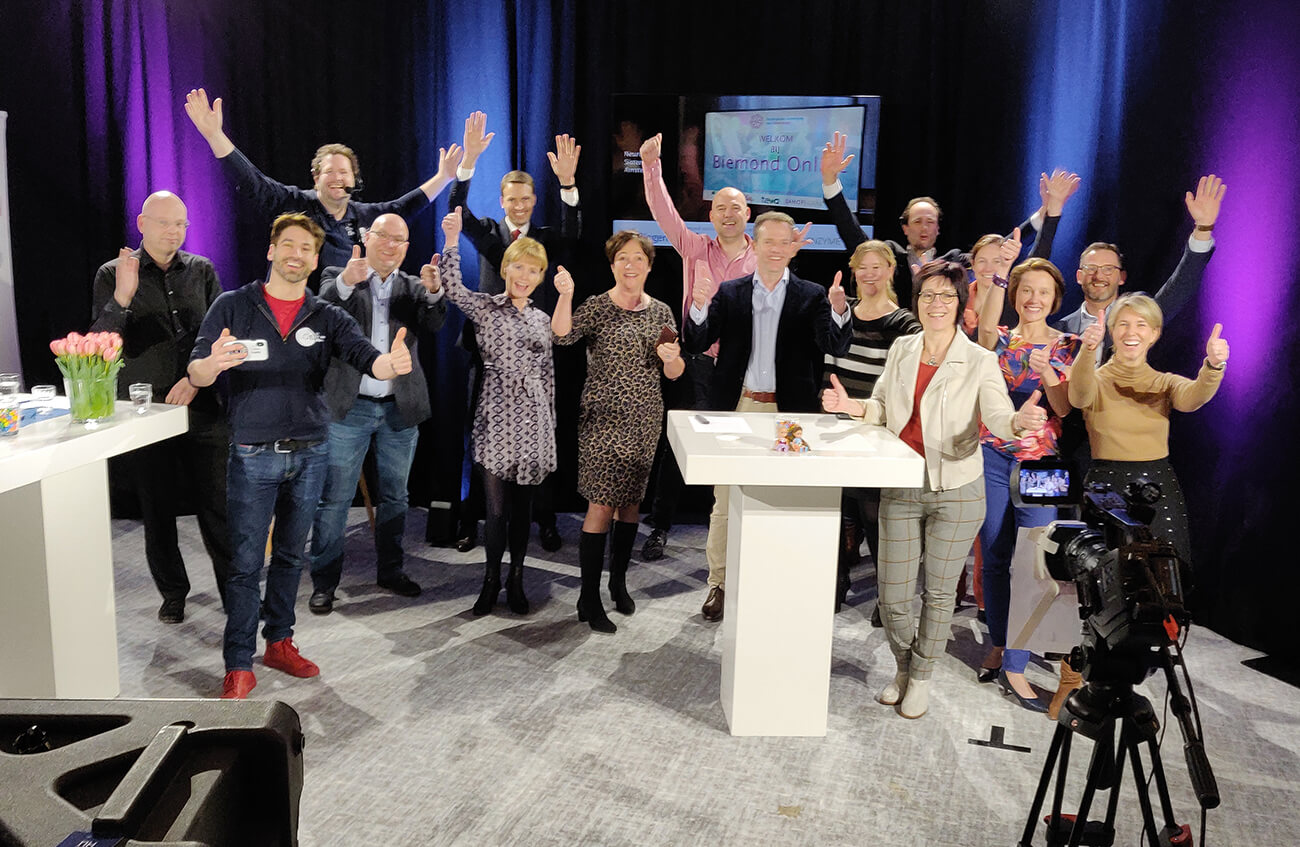The COVID-19 pandemic surging around the world has taken a heavy toll on the events industry. The growing risk has forced SXSW, IMEX and other conferences to cancel. Many others were postponed.
There’s also a third option when rethinking about how you deliver your event: switching your live event to virtual.
Despite the time pressure, that’s what a Dutch national association for medical professionals decided to do, along with their external partners.
In just five days, they completely transformed their live event into a virtual one. If not impressive enough, they were able to re-create an all-around interactive experience both for speakers and attendees.
We spoke with Gerrit Heijkoop and Gerdie Schreuders, experts on hybrid events from LiveOnlineEvents, about how they helped their client to pull it off successfully.
Crisis management in times of uncertainty
Every year, the association runs a two-day accredited conference, which contributes to the compulsory education of medical professionals. Traditionally, they have run it as an offline event.
Seven days before the event, the Dutch government announced an emergency measure to prevent the spreading of COVID-19. The message was clear: no gatherings of over 100 people.
“At that point, the measure only applied to the southern regions, but we weren’t certain how the situation would develop. For 80% of the country, everything was normal,” recalls Gerrit.
Responding to these measures, the association started planning for alternative scenarios.
Five days before the event, they decided to move the event online.
Shortly after, the Dutch Prime Minister extended the emergency measure to the whole country.
“After this announcement, they knew for sure that they had made the right decision. The speakers, who worked in hospitals across the country, were all phoning in to check how many people were at the venue from which we would stream it. They were assured that the total was under 30,” Gerrit adds.
With only a few days to make the switch, there was no time to waste. The result was nothing short of impressive. This is how they did it.
How to switch from a live to a virtual event
To move the event online, the association put their faith in the hands of experts.
The association’s conference planner, Trees Overkamp from TOP Conference Management, planned the whole event and oversaw the move online.
She approached Gerdie Schreuders from LiveOnlineEvents to help with the production of the live streaming, the design of the online program and coaching the hosts on-site.
The association also hired Activo, an event management software agency. They created a bespoke platform for registration, payment, and live-streaming.
Activo worked closely with the conference’s AV partner, Cygnea, who took care of speaker briefings, presentation management, and the AV facilities.
To bring real-time interaction into the virtual environment, they used Slido, an audience engagement tool that helped with real-time audience polling and live Q&A.
When moving the event online, they had to cover three main steps: designing the online program, creating interaction in a virtual environment, and the technical setup.
The technical setup to run a virtual event
The whole conference was live-streamed from the physical venue that was already booked and could not be canceled. They used a smaller meeting room where they built a studio-like setting.
Each day of the conference, eight speakers came to the venue and presented facing a camera. Directly behind the camera, there were three large screens: one with speakers’ slides, one for speaker notes and one displaying live audience questions and polls on Slido.
The AV person in the room monitored the audio-visual setup on his three computer screens.

“A majority of the speakers were ready for this and had no problem with moving online. But there were a few who needed a bit of convincing and guidance on how to make it work,” Gerrit adds.
As they presented, the speaker used a digital spotlight pointer to help the attendees to follow.
To get it online, Activo created a dedicated microsite where people landed after logging into the event. “The attendees could see a video player with the live stream on one side of their screens, and the embedded Slido for live interaction next to it,” he continues.
Designing a program for an online audience
The original agenda was simple and straightforward: a one-stage plenary with eight presentations per day. Each speaker slot included a 20-minute talk and 10-minute Q&A.
“This made the move online much easier. Instead of redesigning the agenda completely, we just took out the chairs for each session, replaced them with our cameras, and ran it as planned. The concept remained the same.”
Luckily, the speakers were already used to interactive presentations from previous years, and they had already prepared poll questions. This helped a lot to overcome the lack of in-person connection.
“By default, a face-to-face program isn’t easily transferable online. You need to create a flow that keeps the attendees stuck to the screen. But without seeing their nods or smiles, you’re in the dark. That’s when tools like Slido are really helpful.”
Read also: Best practices for running virtual events from Gerrit Heijkoop
The power of interaction in a virtual setting
The organizers used Slido to keep the attendees’ attention and help speakers connect with them.
To manage interaction in the virtual space, they dedicated one person as a Slido administrator for the whole event. His job was to review the incoming questions and push polls live at the right time. When he did so, the attendees saw the poll on their screens.
“For each 20-minute presentation, the speakers used four to five polls. Every few minutes there was an interaction point. The quick results displayed on the screen live helped them gather quick feedback and check that the audience was still following.”
For example, the speakers presented a patient case study and asked how the attendees would diagnose that patient. Or they presented a diagnosis and used a poll to see how they would treat it.
Some speakers played with the fact that they were online.
“One presenter displayed a slide with a camera lens photo and asked the attendees, ‘Are you still there?’ At that point, the Slido administrator pushed a multiple-choice poll live with the same question and Yes/No answers. It was a fun moment with the audience.”
After each talk, there was a 10-minute live Q&A segment. The attendees could submit questions throughout the talks, so once it came to Q&A, there were already many questions.

To determine the most relevant questions, the attendees upvoted the ones they liked.
“Many questions had 30 or 40 votes. This made it easy for the moderators when selecting which ones they would pick. They simply took the top-voted ones.”
When the event moderator read out a question, the Slido administrator highlighted it. This way, everyone online could see which one they were addressing.
“The biggest value of Slido is creating interaction in a virtual environment where it is hard to achieve. Sitting at their laptops, people easily zone out. You need to re-engage the participants and keep them involved constantly. Slido really helps with that.”
In total, they collected over 200 questions with over 2000 likes from the attendees in two days. What’s even more impressive is the 18,000 poll votes the attendees placed during the event.
The result: A fully virtual event that beamed with interaction
With only five days to move the event online, the whole event team did a marvelous job. The result was one of the most interactive events delivered with Slido this year.
As Gerrit concludes, “The situation we are in forces people to experiment. The association’s president made an important point: This was the most climate-neutral conference we’ve ever organized. Besides the opportunity to educate and meet in a virtual space, the future of online events offers more sustainable options for the industry.”




